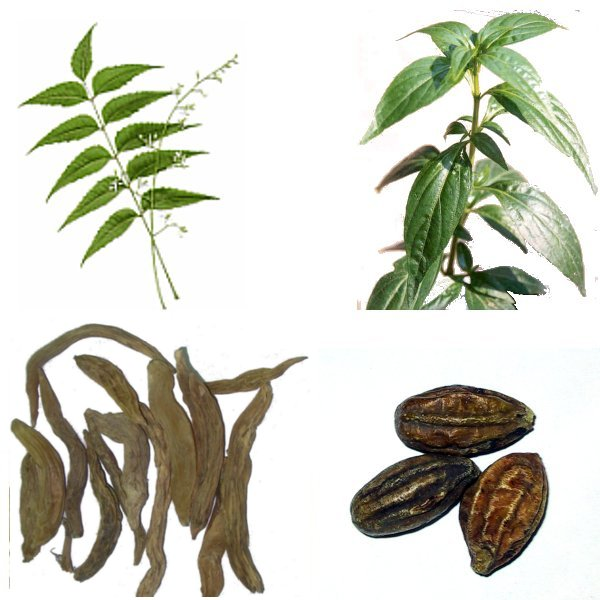
Liver Magic

about the liver
- the liver
- detox
- bitters
- own experience



The liver produces about one liter of bile per day. Collected in numerous small ducts the bile ends up in the gall bladder - the storage tank for bile. From there it is released through the bile duct into the duodenum about 20 minutes after eating. The duodenum serves as a second stomach. There food, after being processed by the acidic digestive juices of the stomach, undergoes an additional alkaline processing by the bile. Bile is a mixture of:
Let me simplify the detox mechanisms of our body using the metaphor of drip brewing. The finished coffee represents the water-soluble components of the coffee powder dissolved in water. It's like the urine of our body, with the filter-paper beeing our kidneys und the urinary bladder being the can. The too-large-to-pass the-filter and non-water-soluble coffee dregs in the filter represent that which our liver removes from the bloodstream. It's a lot of crude dirt and sludge that the liver has to slave away 24/7/365. During daytime alone this immense workload is not managable. For completion it depends on the night shift.
If the liver had pain receptors it would hurt the whole day and the whole night. In case the liver region actually hurts, this is caused by an overworked and therefore enlarged liver pressing into neighbouring tissue to such a degree that pain receptors there give notice. That's rather dramatic and late. What are the precursors of an overworked/enlarged liver? How can I notice in time? How to know how my liver is doing? - No sweat, there is a simple rule of the thumb:
Explanation: A good example for on overworked liver is the hangover und it's primary ingredient tiredness: the liver needs more time to detoxify the excess alcohol without us causing more trouble. The message is: Please keep still until we have cleaned up the mess. Typical hangover symptoms like exhaustion, rotten mood, headache, sick stomach, tense muscles especially in the neck come in various combinations and different degrees from all kinds of intoxications:
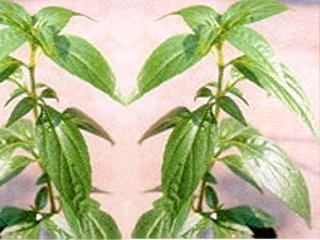
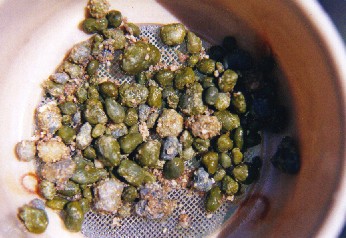
To the left you can see such kind of lumps that came out in the course of a liver-cleanse. The green color comes from fresh bile. With time bile oxidizes turning yellow and later russet giving the stool its characteristic dark color. It's the iron (Ferrum) from dead red blood cells that literally rusts.
In most Humans, even children, the biliary ducts are partly clogged with lumps of detox-sludge. They remain invisible to x-ray and sonography unless they have reached a certain size and age und have undergone gradual calcification.

Detoxification consumes energy. Lots of toxins need lots of energy. In times of need, because detoxifications has a high priority (survival), energy gets diverted from other activities of daily live into detox-processes:
Historically bitter is an alarm-taste. It says "Don't eat it! It's poisonous and you might die of it!" In those times the small quantities of bitter needed for liver regeneration were everywhere in our daily food. only a few generation ago mankind started to systematically eliminate bitter taste through controlled cultivation. Today hardly any bitters make it onto our plates, and our liver gets starved of bitters. Counteracting this needs amounts of bitters that trigger the historic but outdated message: "Don't eat it! It's poisonous and you might die of it!"
In the same time period that had us eliminating bitter taste from our food items, the workload of the liver increased due to a growing amount of toxins hitherto unknown. Industrial production came with a downside. Waste and toxins increase und concentrate not only in our outer environment but also in our inner environment. We definitely need more bitters than cavemen, but get less. Though meanwhile false, it is still alarming.
Our liver works below value, it could do better. Even if it is hard to understand and against my habits, the liver needs bitters for our own good. Suffering from the above described "hangover-symptoms" is a mood killer, especially if it happens every day.
Tired children get crumpy and show it. When I get tired I also become crumpy but try to not show it. A good night's sleep usually solves the problem. But when I'm still tired in the morning I remain crumpy (hang-over), and if that carries on day after day it's called a depression. Bad mood and tiredness are the two sides of the same coin.
It often takes a few days for the body to learn that bitters are not life threating but rather life enhancing. If this is you, take bitters for a few days in a disciplined way, if necessary in very small quantities. Give your body the chance and time necessary to learn that under present circumstances the ancient message "Don't eat it! It's poisonous and you might die of it!" is no langer valid.
It is next to impossible to get the necessary bitters from our regular food. You'll have to resort to collecting wild plants, or grow them in the garden or buy them.
Though detoxification is wanted, the other two properties may not. What to do if I am already feeling cold? Or in case the mucosa of my joints is already dry? Can I use bitters, after all my liver needs support, in spite of these unwanted effects?
Yes, certainly, but not pure bitters. One should use a combination of bitters with other herbs that counteract the unwanted effects, herbs that create warmth and "lubricate". Since we are all different, the amount of counteracting herbs needed varies with the constitution of the concerned person. Detailed Information follows further down.
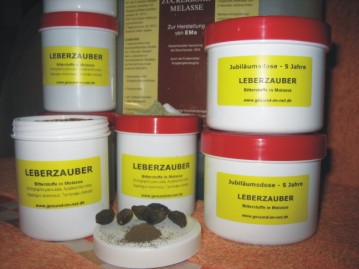
Until the age of 27 I practiced high-performance sports and ate accordingly. From one day to the next I stopped sports, turning into a lacto-vegetarian and continuing to eat the same quantities. Five years later I had developed the typical symptoms of diabetes:
At that time I lived in Singapor and Malaysia, having lots of contact to people of Indian descendance. According to traditional Indian medicine the pancreas can only cause trouble in case of a malfunctioning liver. They therefore treat initial diabetes as liver weakness, translating into a radical change of food habits and lots of bitters.
I dropped white sugar and chocolate almost completely and drastically restricted products made from refined starches. Additionally I took a mix of bitters in molasse 3x a day. My Indian friends introduced me to this mixture that I now call Liver Magic. My generell well-being slowly but continually increased. After about nine month I was without physical symptoms of diabetes and reduced the intake ofLiverMagic to 2x a day. After another 4-5 month I took it only in case of need, which I still do today. I can still develop diabetical symptoms, but it needs prolonged misuse of sugar and refined starch products.
10 years later I returned to Germany. The bitters available could not meet the quality demands I have carried over from Asia. I suspect it to be due to our cultivation and processing of the herbs. Though we have highly effective plants like St. Mary's Thistle, once they have been turned into a commercially available product they do not satisfy my demand. I'm spoiled.
Experiments with local bitters made it clear to me that wild harvesting can meet my own individual need. But making it available for others is economically not feasable. Stiffeled in my wishful imagination of using local herbs I started looking for a supplier of the Asian herbal incredients ofLiverMagic. I was lucky and ever since the demand for this modern variation of a traditional Indian recipe (Vaedyak Shastra, a Bengal branch of Ayurveda) has increased steadily.
So far I have not come across any herbal remedy matches the broad effect and cost-effectiveness ofLiverMagic. Certainly highly individualized support of the liver can be even more effective. However, it's not that easy.
For starters you just want to taste and find out whether it suits you ("maybe it's not worth the effort"), and wether you can override your taste objections. Try the "regular"LiverMagic It's the least demanding variation and by the way, it's the most economic one.

Mix the following four powdered herbal powders in a relation of 1:1:1:1 into sugarcane molasses of room temperature:
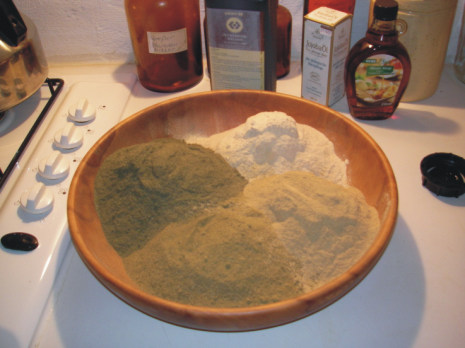 1. LiverMagic (LM)
1. LiverMagic (LM)
No matter where I buy molasses, its viscosity changes with season and from batch to batch. The viscosity ofLiverMagic is bound to vary accordingly. Herbs too are different from charge to charge, their color, consistency, taste and courseness vary too. Asparagus being more fibrous than the other herbs has a tendency to form lumps. And so on. These are signs of life. Even the apples from a single tree taste different depending from which side of the tree they come.
For a couple of month ½ teaspoon on an empty stomach in the morning, ½ teaspoon in the evening before going to sleep. Pay attention to the degree to which the paste influences your fatigue und lack of energy. From this observation you can infer you future use ofLiverMagic, as well the amount and the duration. In case you wake up between 1:00 and 3:00 a.m. and have difficulties to go back to sleep, take an additional dose at that time.
 The basic recipe (see above) suits all. Choose it if you:
The basic recipe (see above) suits all. Choose it if you:
 VATA"skinny chatterteeth" |
 KAPHA"chubby chatterteeth" |
 PITTA"don't feel cold" |
|
|
|
VATA-types with weak liver need bitters too, although their being cold, light and dry will be aggravated by them. Therefore theirLiverMagic-VATA contains more ingredients that warm, make heavy and lubricate:
|
KAPHA-types also feel cold easily, but dryness is not their problem and they are not light. ThereforeLiverMagic-KAPHA contains more ingredients that make light, dry and warm:
|
PITTA-types don't feel easily cold, they are neither too light nor too heavy und their lubrication is o.k. They can take and respond well to more bitters. TheirLiverMagic(s) are
|
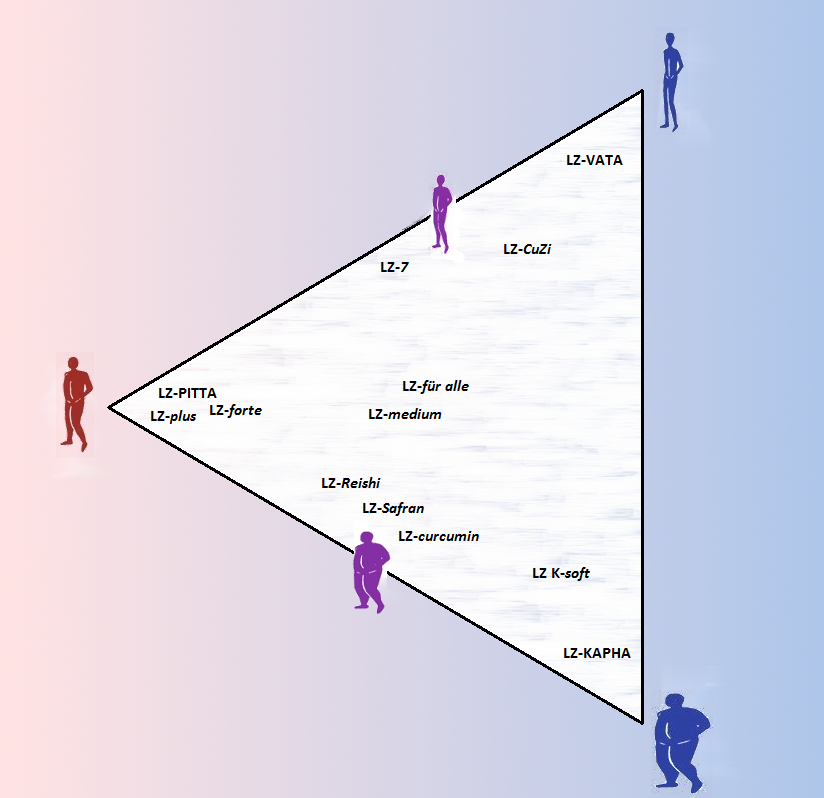
In western societies PITTA-types prevail. It's more correct to say the PITTA-factor prevails in western societies. Pure Constitutions are not very common, and among the mixed types most are either PITTA-VATA or PITTA-KAPHA.